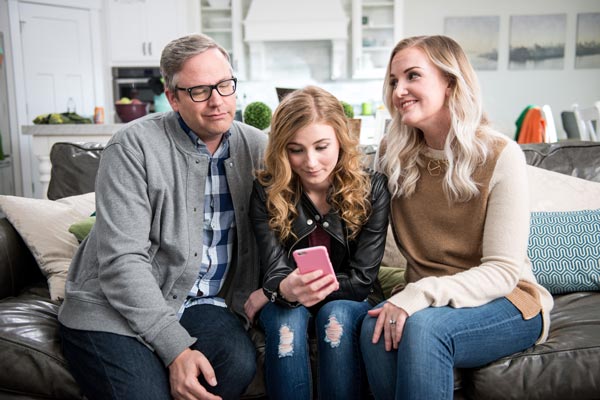It is often difficult for parents to truly understand how important social media, and the mobile devices they use to access the Internet, is to their children. There really isn’t a point of comparison that parents can draw from their own childhood. Parents look at their child’s smart phone as just an electronic thing—a toy. They unfortunately misunderstand the important and central role it plays in their child’s life.
Parents, remember when you were a child and if you wanted to hang out with a friend, you had two choices: You could call them up on the phone and have a conversation, or go to their home and see them there. Possibly, if you had transportation you could meet at a central location, like the Mall, and hang out with a few friends at one time. Those personal connections with your friends were essential at that informative time in your life. This is still true today for children, but what has changed? With social media, your child can now hang out with all their friends, all the time, wherever they are. Not only that, but they are sharing powerful images and ideas of what is important to them with instant feedback from hundreds, even thousands of “friends.” Social media has created a feeling of connectedness never experienced before in human history. Your children do not know a world without the Internet or social media, and they can’t imagine being in a world without it. In a study conducted by Cisco, they found that more than half of the young people surveyed considered the Internet an “integral part of their lives,” as important as food, water and even air. Social media was something “that they could not live without.” (Cisco, 2014)

Clearly, the Internet, social media, and the devices used to access them are vitally important to your children. I hope you are convinced that social media should be equally important to you. Not for the intrinsic value that social media has for connecting with friends, but because social media is the crossroads to your child’s world. The old saying, “The eyes are the windows to the soul,” may aptly be replaced with: “The social media feed is the window to the soul.” As a parent, you may be wondering what are your child’s desires, fears, and thoughts on sex, drugs, depression, and suicide. Your child and their friends are talking about all these issues out in the open, on their favorite social media platform. Your child’s social media feed is the landscape of your child’s values and influencers. Social media does not just reveal your child’s thoughts and feelings but it is also a place where cyberbullying and sexual exploitation occur. Many children who are being victimized seldom tell their parents or ask for help until it is too late. No matter who your child is, there are compelling reasons to be present in their social media world.
I have found that most parents have no idea what is going on in their child’s social media life. Almost eighty percent of teens said that they did not have parental rules about Internet use and only eleven percent told their parents about either being bullied or seeing something disturbing online. (ncpc.org, 2015) Does your daughter have a friend who is posting her suicidal thoughts or does your son have a friend that post an image of his marijuana pipe with the caption, “Wake and bake?” The reason I asked those two questions is because they are two situations where students have alerted me to disturbing images they have seen on Instagram. I viewed the two accounts, which were public (open to anyone who wanted to view them), and saw that between the two accounts, there were 56 “likes” or comments. Out of those 56 students, who were actively commenting on those accounts, only two students reported what they saw to me. But, what’s more important and shocking—not one parent contacted me. None of the parents of the 17 students who were dealing with the stress and sadness of a girl they knew who wanted to hurt herself, nor the 39 students who “liked” the post of a student that smokes marijuana every morning knew what was going on. I tell parents that your child may never be the bully or the victim, but I guarantee that sooner or later your child will be a witness to some disturbing images or posts. As parents, we can not make the world a perfectly safe place for our children, but what we should strive for is being available and present to step in and have that important parenting moment—where we provide counseling, comfort, and safety.
The next step isn’t difficult, if you know what to do. I have created tools like the Internet Usage Contract, and step-by-step articles in the BLOG section of my website to help you create a safe online environment for your child. I invite you to come to one of my workshops where you will learn what are the social media applications your children are using, what are the real online threats to your children, and how you can protect and monitor your child’s social media life.
You can find upcoming workshops on the class calendar. If you don’t see a workshop in your area, contact me to learn how you can host a two, four, or eight-hour class.
References:
http://www.ncpc.org/resources/files/pdf/bullying/cyberbullying.pdf





